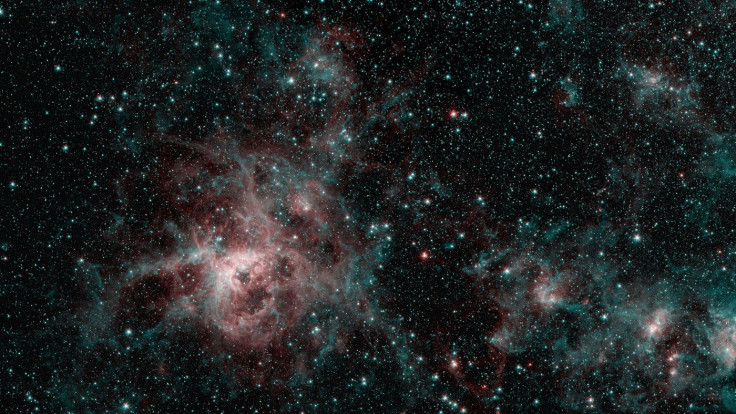NASA Releases Spitzer Image Of Tarantula Nebula Days Before Telescope Retires
KEY POINTS
- The Spitzer Space Telescope is finally retiring on Jan. 30, 2020
- NASA released an image of the Tarantula Nebula from Spitzer Space Telesope data
- The Tarantula Nebula was one of the first targets studied by Spitzer
Just days before the Spitzer Space Telescope finally retires, NASA released a new image of the Tarantula Nebula from Spitzer data. The high-resolution Spitzer image combined multiple recent observations of the nebula from February to September 2019 and showed the nebula in two wavelengths of infrared light.
Specifically, the red color at the center of the nebula shows the presence of hot gas emitting infrared light at a wavelength of 4.5 micrometers while the blue regions are dust composed of polycyclic aromatic hydrocarbons (PAHs), which are molecules that can also be found in ash on Earth. The regions that are white are the ones that emit both wavelengths.
Interestingly, Tarantula Nebula was one of Spitzer’s first targets when it launched in 2003. So, it's only fitting and quite poignant that NASA released this image just days before Spitzer finally retires on Jan. 30.
“I think we chose the Tarantula Nebula as one of our first targets because we knew it would demonstrate the breadth of Spitzer's capabilities,” Spitzer project scientist Michael Werner said. “That region has a lot of interesting dust structures and a lot of star formation happening, and those are both areas where infrared observatories can see a lot of things that you can't see in other wavelengths.”
Tarantula Nebula (NGC 2070)
The Tarantula Nebula (NGC 2070) is located in the Large Magellanic Cloud, a dwarf galaxy that is gravitationally bound to the Milky Way. It is the home of starburst region R136 where stars form close to each other and at a much higher rate than the rest of the galaxy. In R136, stellar winds, intense radiation and supernova shocks energize the glow of the nebula and shape its signature spidery filaments.
The Tarantula Nebula is also where one can find 1987A, the star that exploded into a supernova with the power of a hundred million suns for months.
First cataloged as a star called 30 Doradus, it was only in 1751 that Nicholas Louis de Lacaille finally categorized NGC 2070 as a nebula. Other names for it are “Great Looped Nebula” and “True Lovers’ Knot” by Mark R. Chartrand as well as “Looped Nebula” by John Herschel.

© Copyright IBTimes 2024. All rights reserved.






















